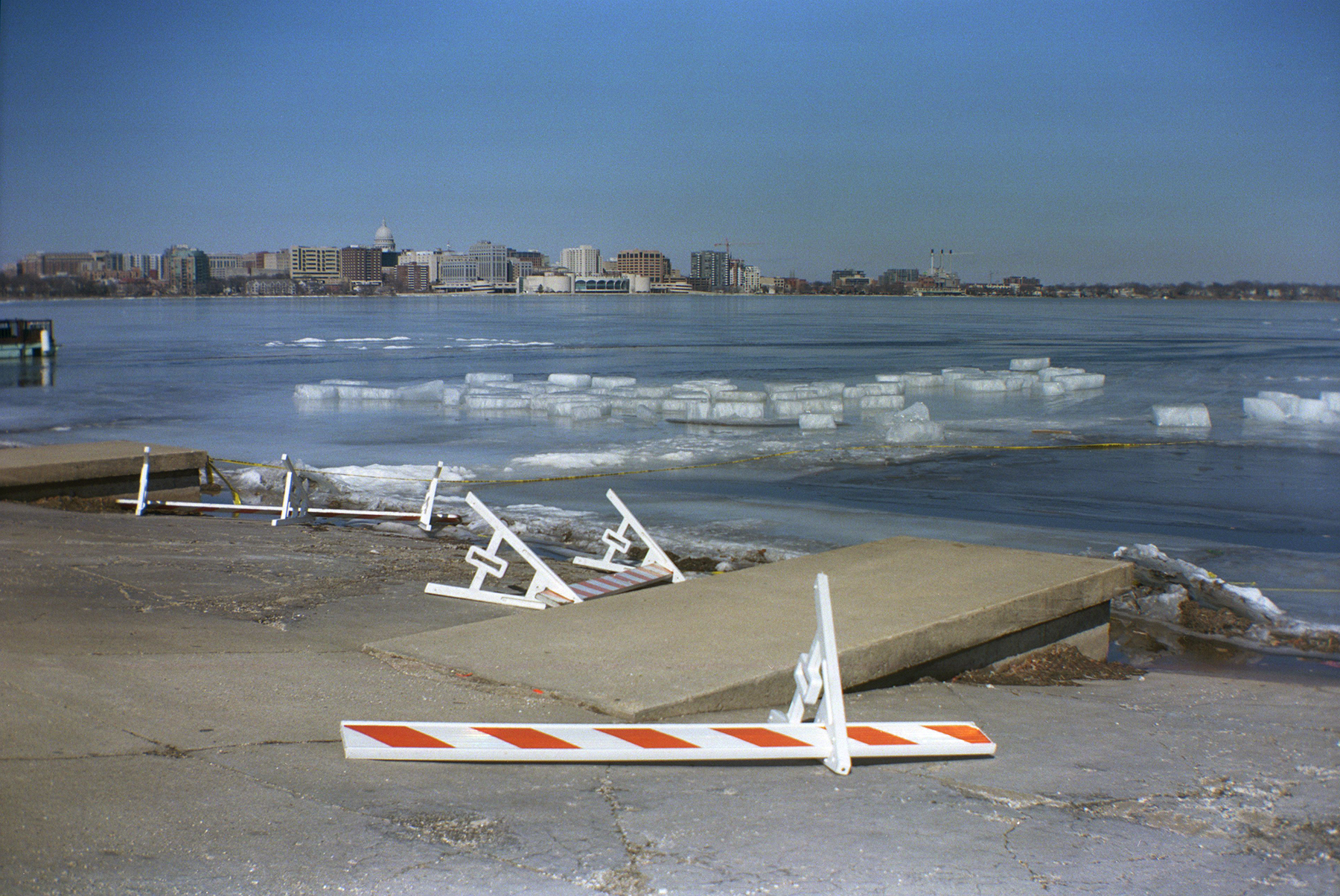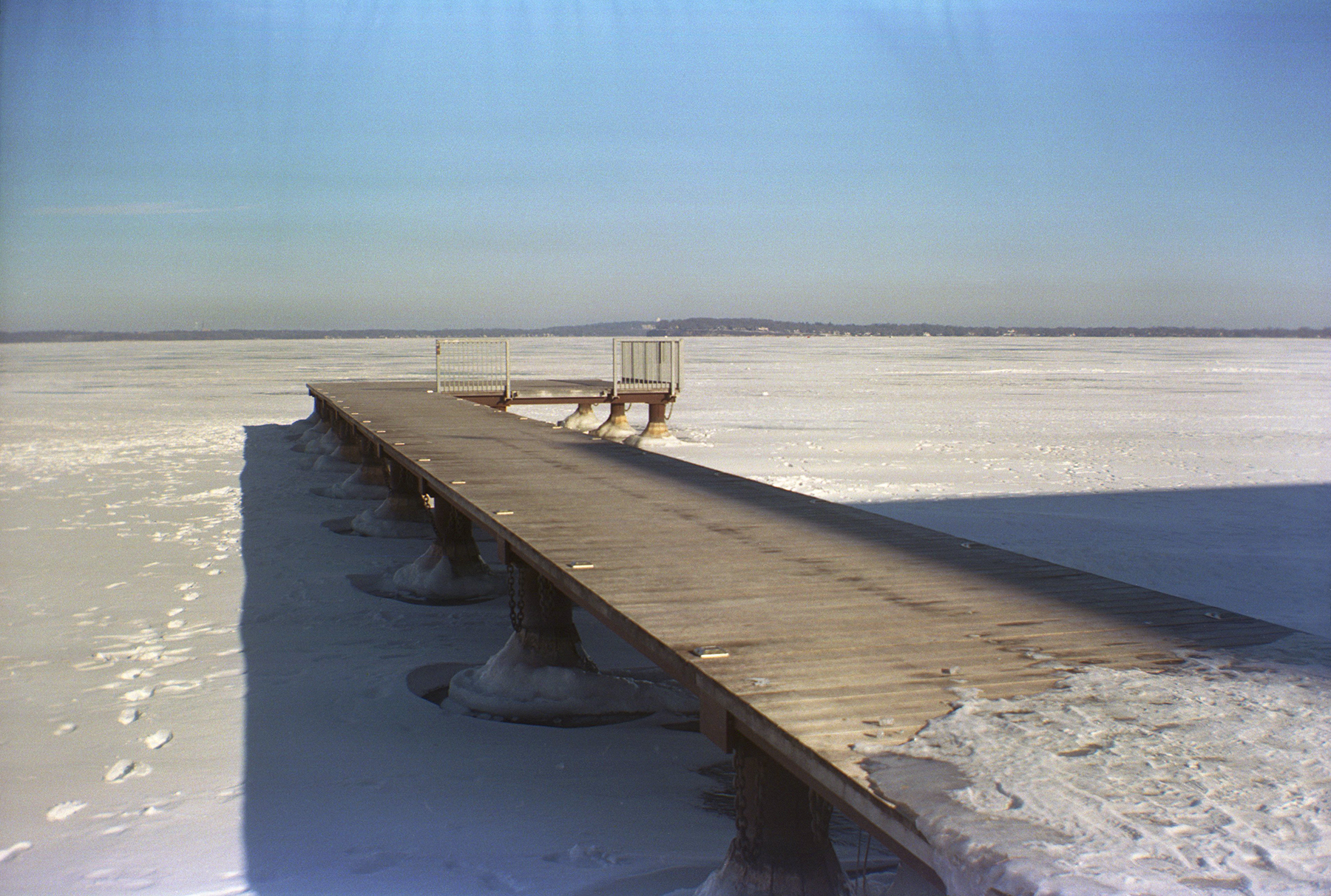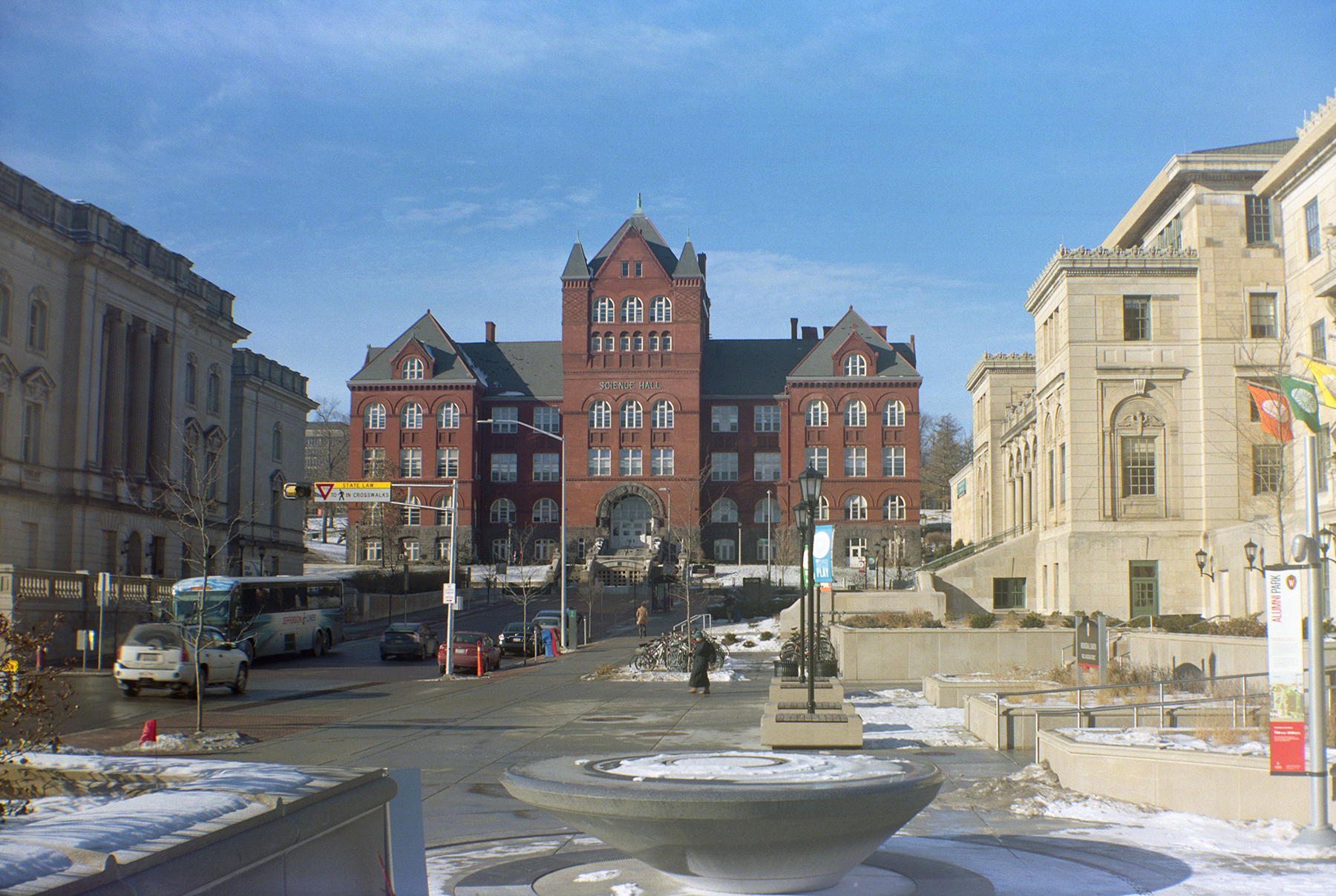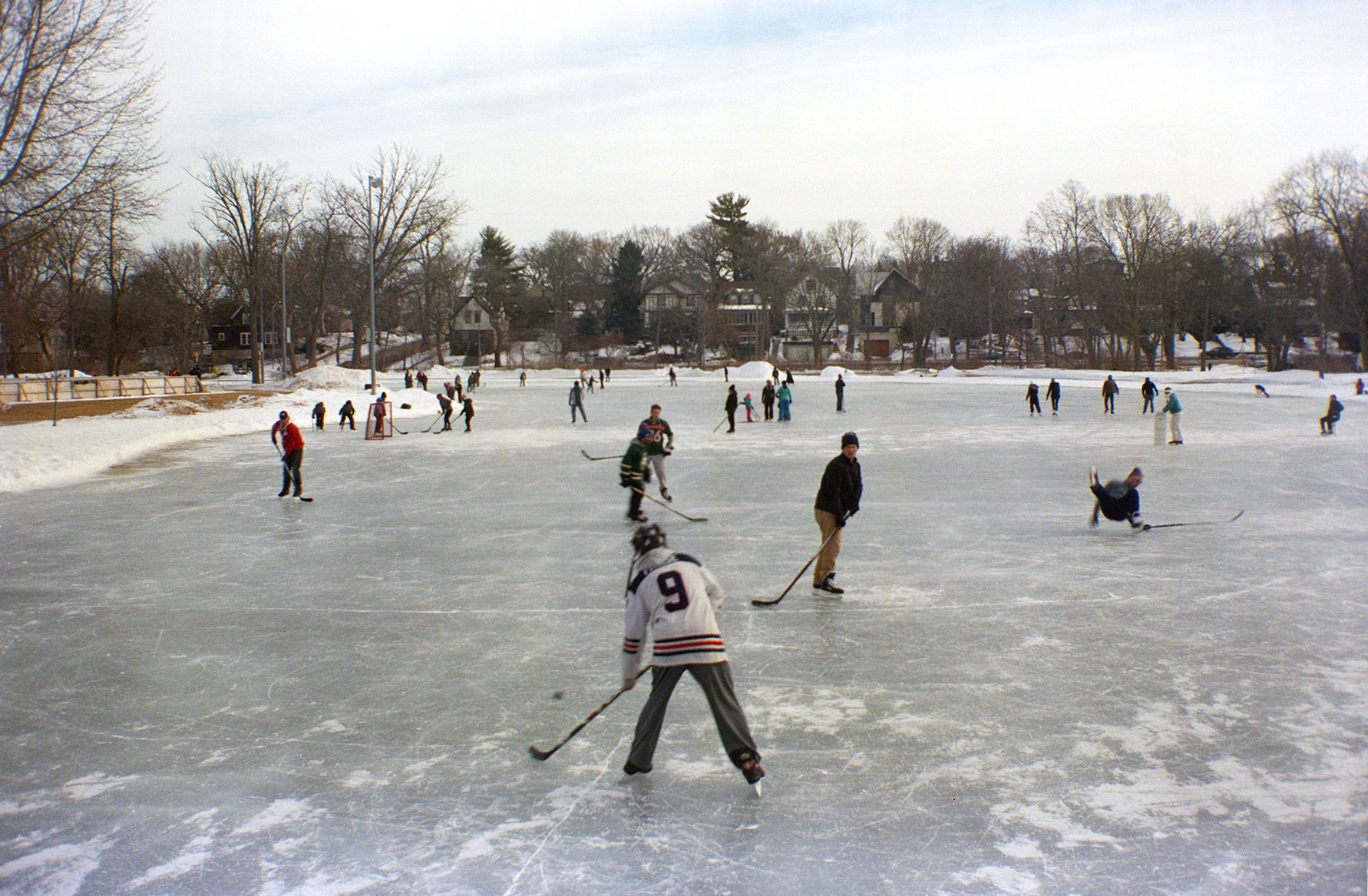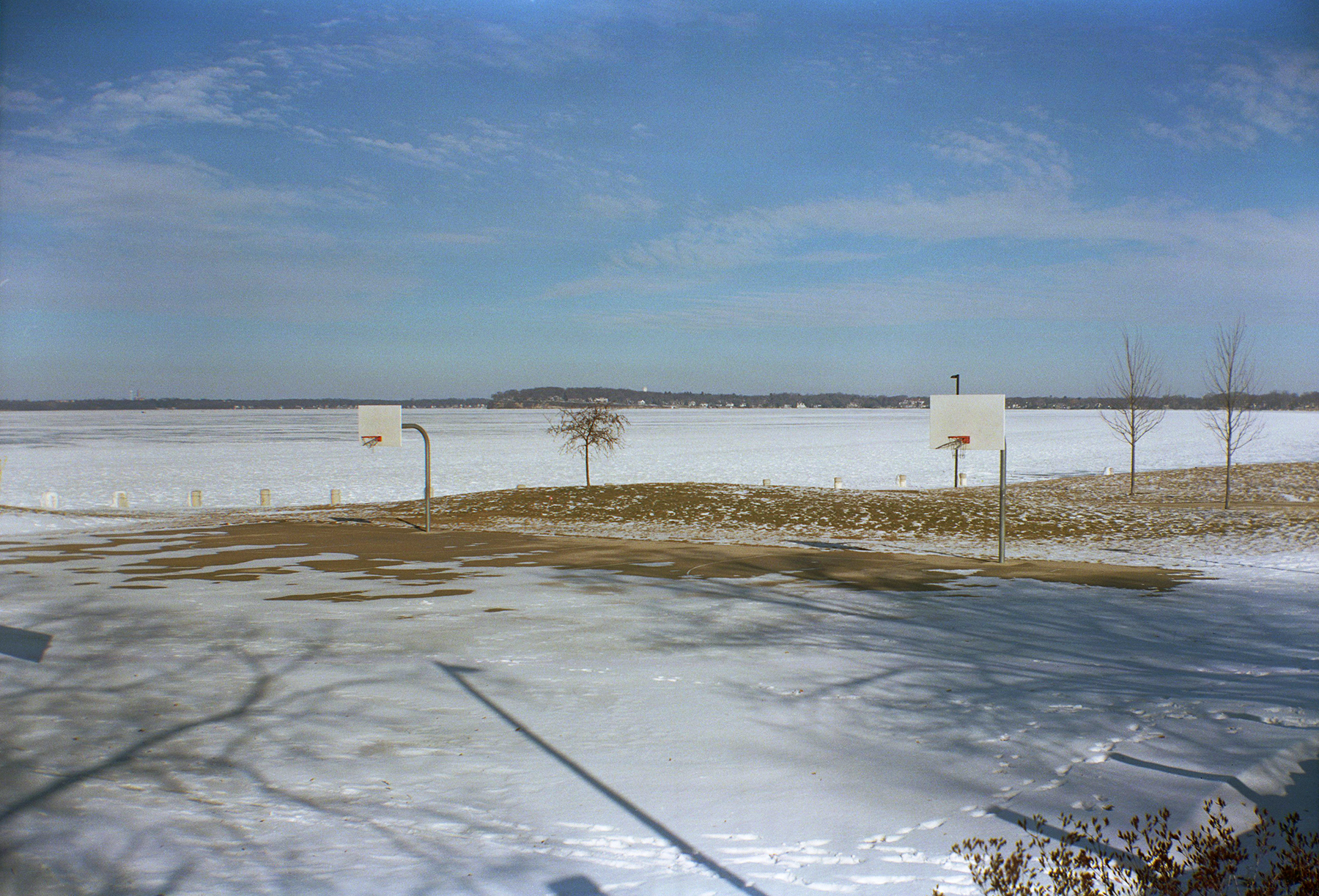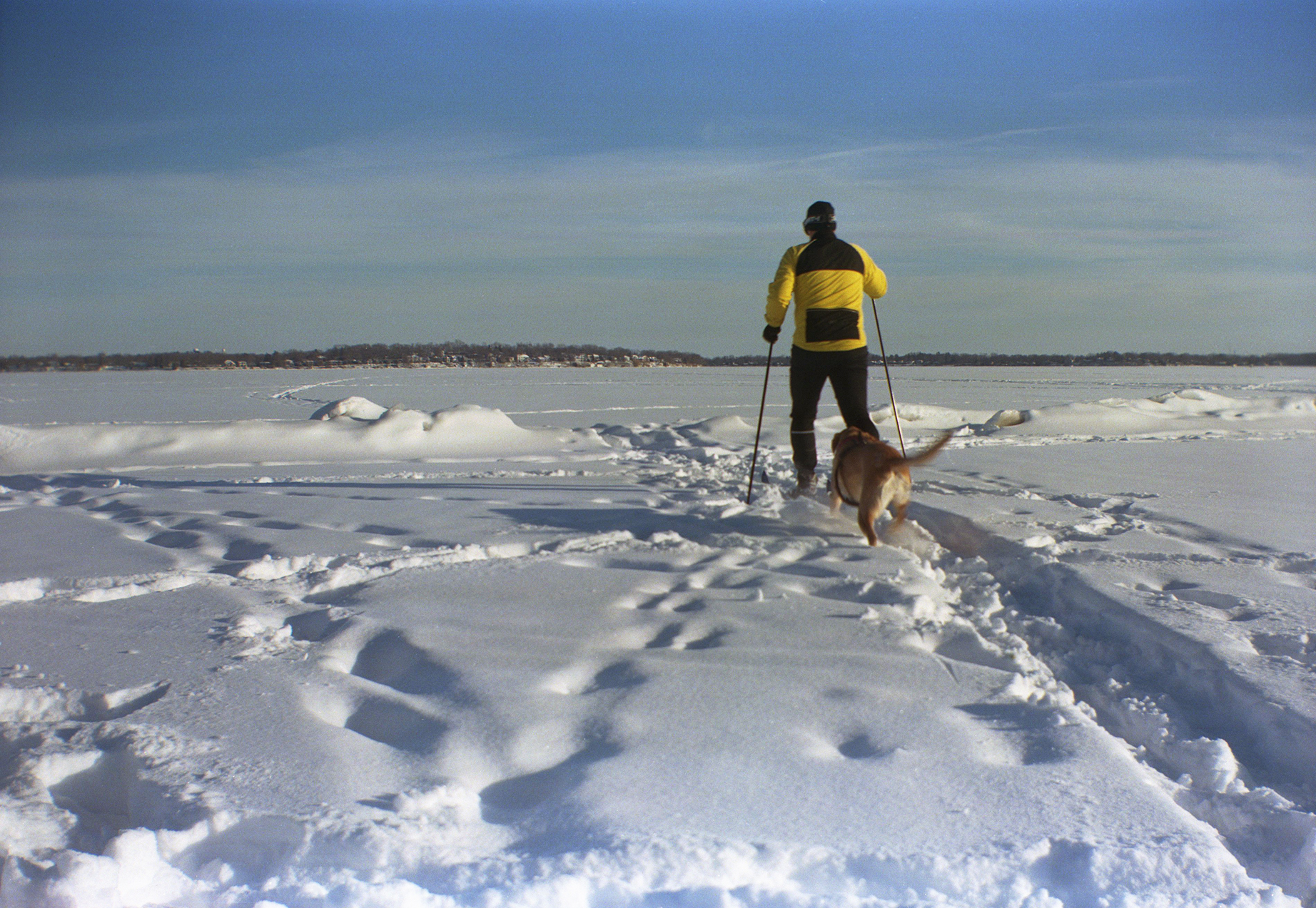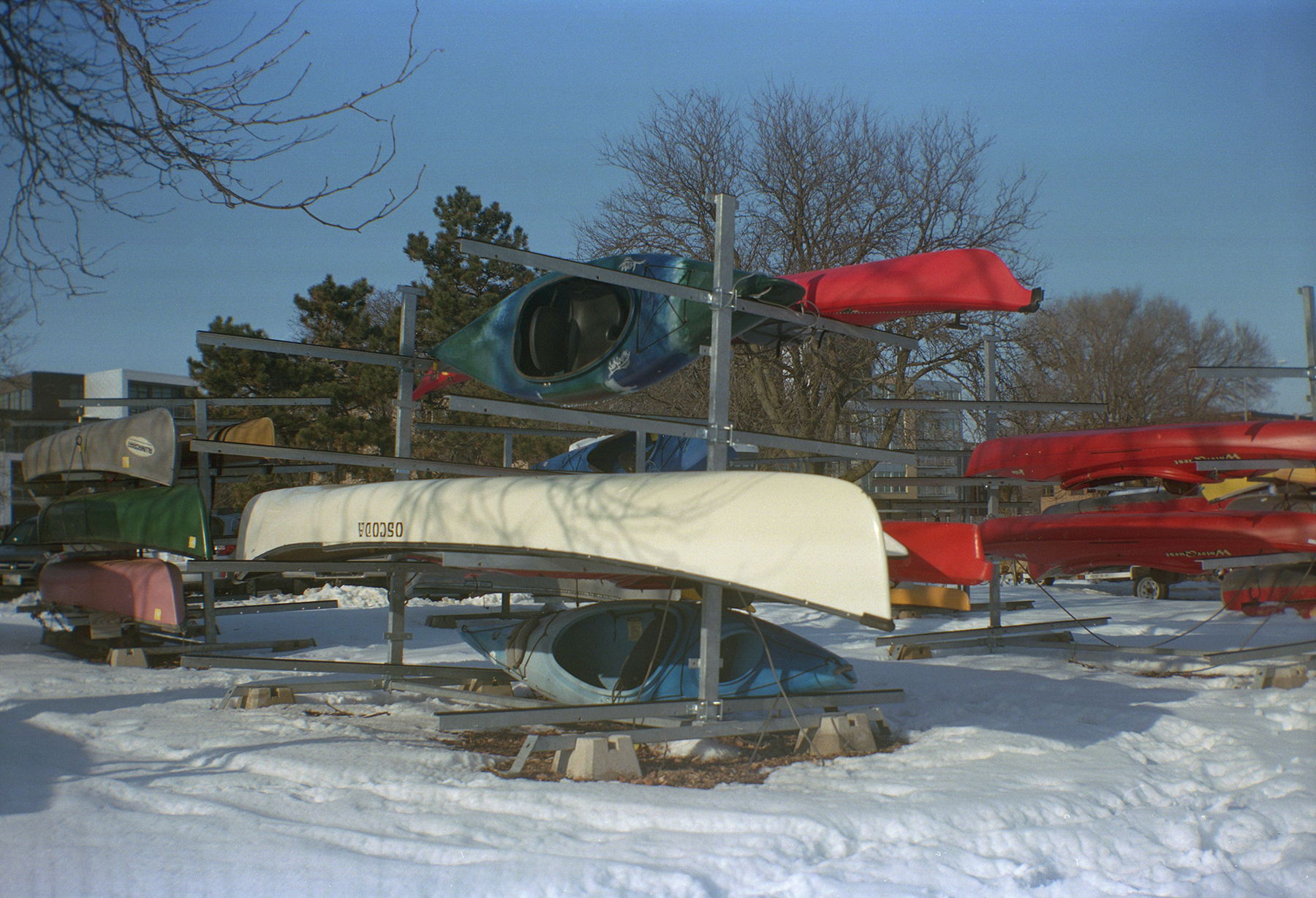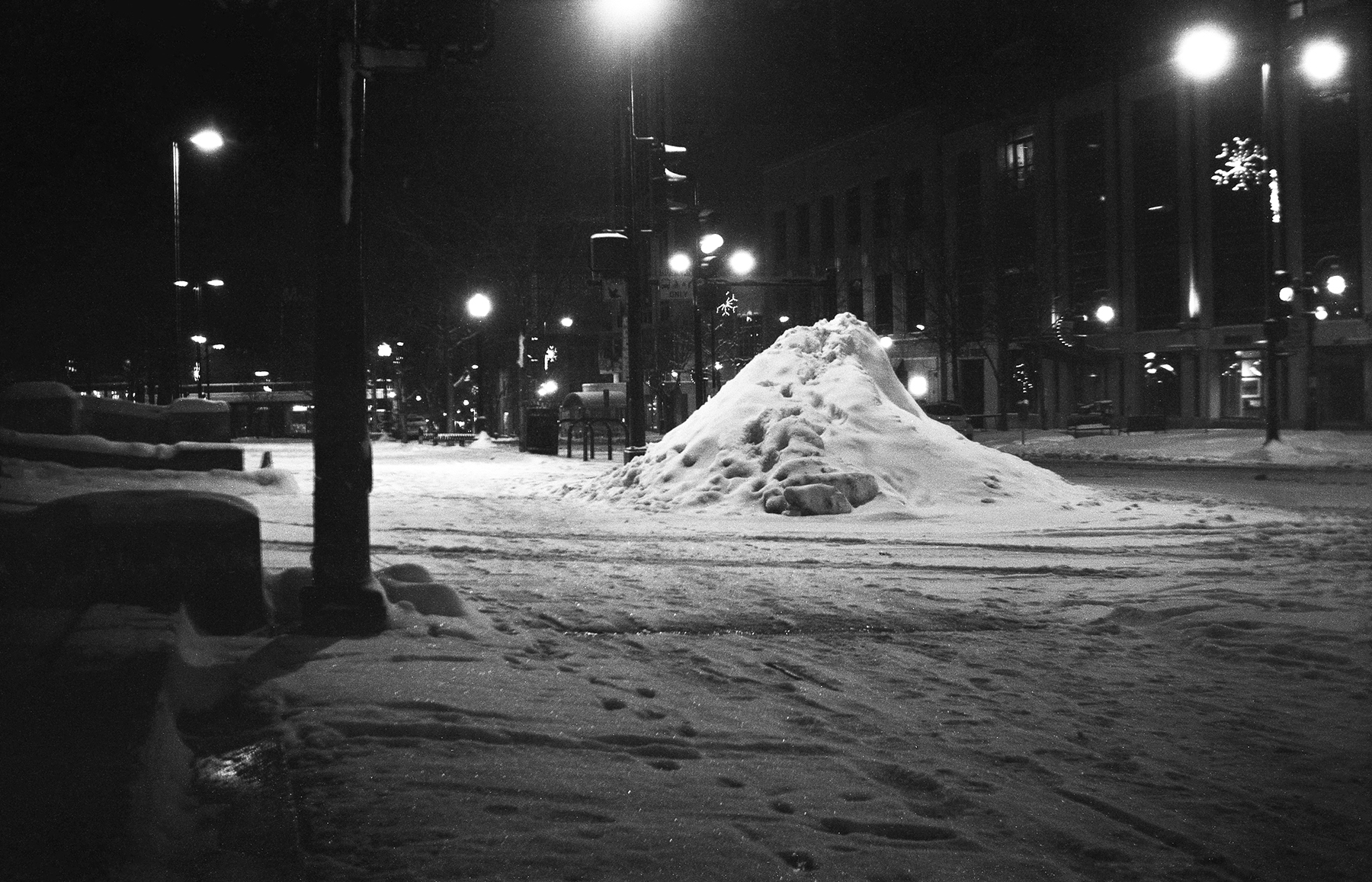Wisconsin winters are cold. Really cold. Being outside can be unbearable at times, especially when the temperatures are in the single digits for weeks on end. Before winter went in to full swing here, I had made plans to do some indoor photography projects during the cold months, maybe a still life series or a portrait series.
I had it all planned out, then the first snow happened and changed all of my photo plans. I wanted to get outside and capture the winterscape on film. This was my second winter in Wisconsin, and the thing I find most fascinating about winter here is the freezing of the lakes and ponds. Huge bodies of ice form, and the water won’t be seen again until March. I am from the southwest, this doesn’t happen in New Mexico. A local told me when speaking of all the winter activities, “We are a hardy bunch!”, and indeed this is true. Ice fishing, cross country skiing, ice skating and hockey are just a few of the low temperature activities here. Cold temps are a welcome transition for these northerners when winter arrives. The days are short, the sun rises and sets in a soft arc, and the light illuminates everything in a soft, pastel way.
I chose to photograph the winter with my Kodak Six-20 Brownie Junior. It is simple and doesn’t require much technical set up so I thought it would be good for my cold hands and for moving from one place to another easily. I used some kind of stabilizer for every shot: a light pole, steps, walls, trees, park benches, a bike rack, a fire hydrant, the ground, my knee. It can probably be shot hand held, but I didn’t want to take the chance being that there are only eight images per 120 roll. Yes, I unwound and rewound 120 film onto a 620 spool.
There are two viewfinders, one for landscape and one for portrait orientation. I almost always used landscape, simply because it was easier for me to see my composition within the small viewfinder window. It has a small aperture (probably equivalent to F16), and a larger one (approximately F11). Also, there is a bulb mode so both of those can be held open for any amount of time.
They were manufactured between 1934-1942. The “junior” is one of a very long list of Brownie “box camera” models produced by Kodak. The lens is a fixed meniscus lens, and I would guess the shutter speed is anywhere between 1/40-1/60. It held up in the freezing temperatures and has held up over time (nearly 80 years!).
My next plans for using this camera are already in the works. There were so many “box” cameras produced, and there are still so many available. I found mine for $12. I like to think about where it has been and what kind of photographs it has taken with it’s previous owners. If you ever get the chance to shoot with one I highly recommend it!


